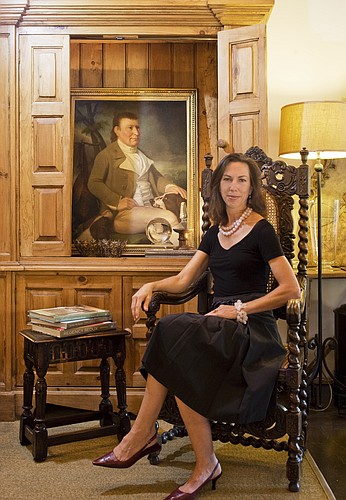- April 26, 2024
-
-
Loading

Loading

Florida’s Spanish-style architecture is inspired more by fantasy than reality. A dreamy blend of forms and flourishes from Spain, Italy, ancient Andalusia and Latin America, the evocative style was created in the late 19th century to grace America’s most romantic tropical resorts. In 1889, when transportation magnate Henry Flagler hired the New York firm of McKim, Mead and White to design the state’s first luxury hotel — St. Augustine’s Ponce de Leon — the result was a lavish concrete and coquina edifice with splashing fountains, courtyards, loggias, towers and a red barrel-tile roof. A wintertime Xanadu for Belle Époque tourists, the building (now the crown jewel of Flagler College’s campus) captured the ornate beauty of Spanish and Italian Renaissance palaces.
As Florida’s play land spread southward, its architects grew even bolder and more imaginative. In 1891, Flagler’s railroad competitor Henry Plant opened the Tampa Bay Hotel — an exuberant expression of Moorish Orientalism with Arabesque arches, onion domes and crescent moon lightning rods. Although Addison Mizner did not come on the scene until 1918, when Paris Singer invited him to design a convalescent home in Palm Beach for World War I soldiers, he became the architect most widely associated with the state’s Spanish style. Upon first seeing the site for the building that was to become the soigné Everglades Club, he said that it made him think of “a nunnery with a chapel built onto the lake … a mixture built by a nun from Venice, added onto by one from Gerona, with a bit of new Spain of the tropics.”
Mizner, who spent a few formative childhood years in Guatemala with his diplomat father, is credited with bringing a Spanish colonial flair to Florida’s architectural vocabulary. He mixed its bold arcades and jungle-Baroque decoration with more refined Mediterranean Renaissance details such as linen-fold paneling and intricately coffered ceilings. Having created a growing demand for antique carved stone, wood and tile through his designs, Mizner started a factory to produce facsimiles with which he supplemented genuine artifacts imported from Europe. Then, as now, a combination of reclaimed materials and distressed, faux-finished new ones set the stage for romantic living.
When Winter Park-based architect James Gamble Rogers II began designing Spanish-style houses in the inland resort town in the 1930s, he paid homage to the humbler yet equally picturesque architecture of Spanish farmhouses, or estancias. These rambling, low-slung houses with cool tile floors, dark wood ceilings and windows opening to courtyards provided an ideal form for indoor-outdoor living in the Florida lake country, especially in the temperate winters that attracted seasonal residents from New England and the Midwest.
Like Mizner, Rogers, who also designed many of the Spanish-style buildings of Rollins College, recognized the importance of using materials with the patina of age to create seamless architectural fantasies. At Casa Feliz, a 1932 private residence, he made the roof of handmade Cuban tile reclaimed from the 1886 Orland Armory, demolished in 1930. When demolition began on Casa Feliz 50 years later, these tiles and handmade bricks strew the Lake Osceola lot where a bigger, newer home was to be built. Thanks to the efforts of Gamble’s son, architect and preservationist Jack Rogers, demolition was halted and the 750-ton house was moved to a nearby lot on Park Avenue. Now a historic house museum open for tours, weddings and meetings, the house testifies to the enduring appeal of Florida’s Spanish style.
Susan Sully is the author of “Casa Florida: Spanish Style Architecture from Winter Park to Coral Gables.” On Wednesday, Oct. 3, at 5:30 p.m., and on Thursday, Oct. 4, at 10:30 a.m., Sully will present “Casa Florida: The Romance of Spanish Design” at the Casa Feliz Historic Home Museum in Winter Park. For more details and reservation information, visit casafeliz.us or call 407-628-8200, extension 1.